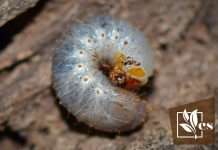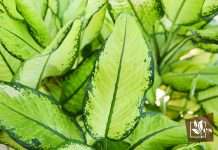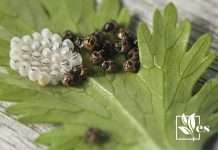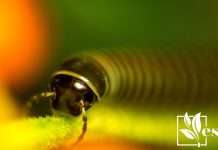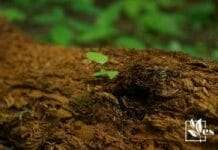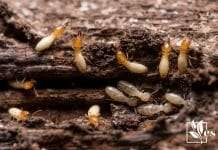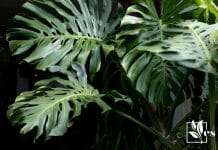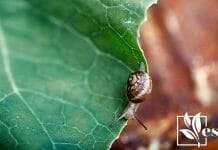I’ve noticed several indoor plant enthusiasts encounter a puzzling situation: mysterious holes appearing in the soil of their potted plants or the plants themselves seemingly disturbed. This concern is not uncommon and many plant owners struggle to identify the culprits that could be digging through their indoor greenery. My own experience with indoor gardening has taught me that, despite our best efforts to create a controlled environment, nature often finds a way in. Detecting the cause of such disturbances is essential to ensure the health and longevity of your indoor potted plants.
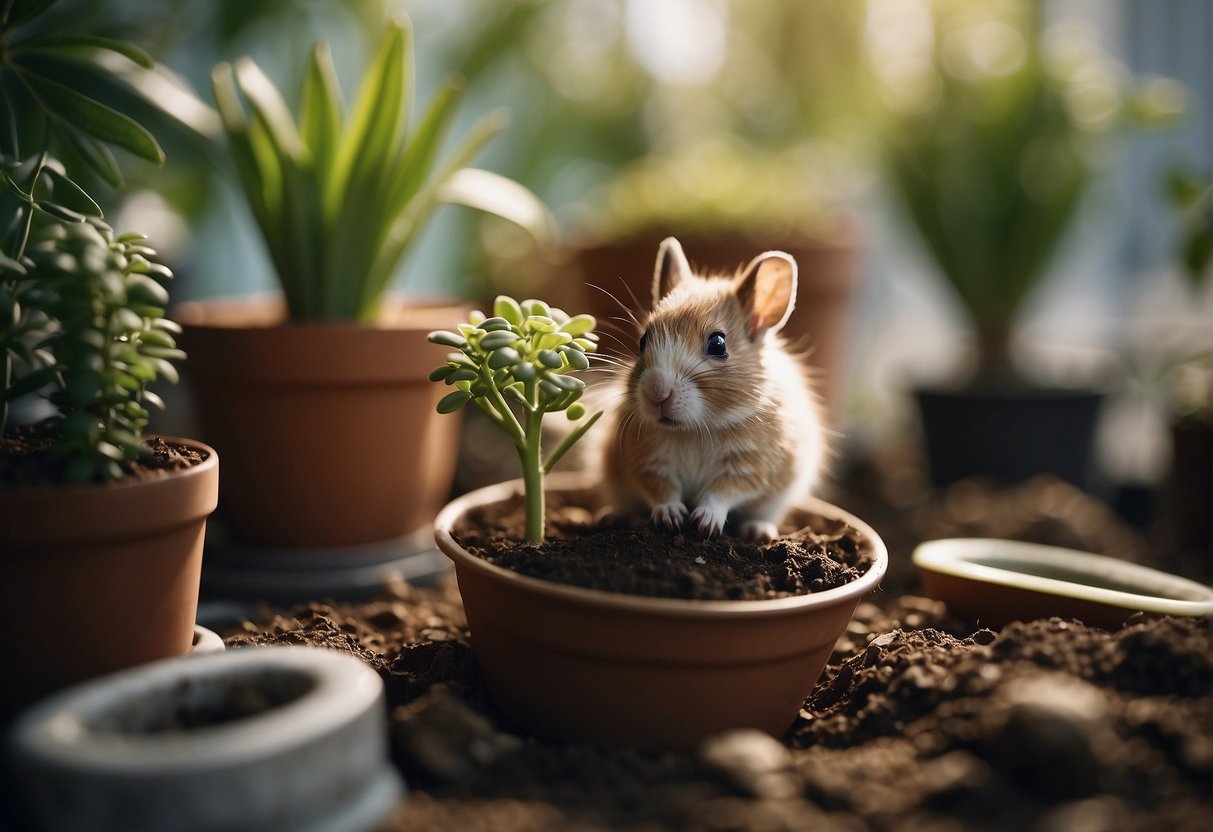
In my investigation into what might be digging in my indoor potted plants, I’ve learned that common household pests like insects and even small mammals can find the environment of a plant pot quite appealing. For example, by closely examining the plants and soil I could sometimes spot small beetles or the presence of other creatures that had made their way into the pots. In some cases, evidence of digging could also point to larger animals such as mice, which are known to burrow for food storage or to find shelter. Understanding what specifically is affecting your plants may require a vigilant approach, including periodic monitoring of your potted plants, especially at dusk and dawn when many of these creatures are most active.
The holes in the soil of indoor potted plants are often caused by pests such as insects or small mammals seeking food or shelter.
JUMP TO TOPIC
Pest Invasion in Indoor Potted Plants: Identification and Control
I’ve come to understand that managing pests in indoor plants involves first identifying what you’re dealing with and then tackling it with the right approach. Let me share some focused insights and strategies regarding this.
Identifying Common Indoor Pests
Pest Identification:
| Insect Type | Signs of Infestation | Common Plants Affected |
|---|---|---|
| Ants | Trails leading to plants, soil disturbance | Any with sweet sap or aphid issues |
| Fungus Gnats | Adult gnats flying around, larvae in soil | Generally in overly moist soil |
| Mealybugs | White cottony spots, sticky leaves | Many, including succulents |
| Aphids | Discolored leaves, sticky residue | Roses, vegetables, ornamentals |
| Root Aphids | Yellowing plants, stunted growth | Many, especially in hydroponic systems |
| Mice/Rodents | Holes in soil, chewed plants or fruits | Almost any, especially grains and seeds |
Eco-Friendly Pest Control Methods
For the safety of both my plants and the surrounding environment, I prefer eco-friendly options:
- 🌿 Garlic/Mint Spray: Natural repellent for many insects.
- 🌶️ Hot Pepper Wax: Deters a variety of bugs without harming plants.
- 🌱 Neem Oil: Effective on a wide range of pests, also has a systemic effect.
- 🐞 Introduce Beneficial Insects: Such as ladybugs for aphid control.
Professional Pest Prevention Strategies
When the situation is beyond my control, I rely on professional methods which involve:
- 🧪 Insecticides: Professionals use targeted chemicals that are specific to the pests, ensuring their safe and effective use.
- 🐁 Traps and Baits: For rodent control, professionals might set up traps or baits strategically to catch mice without endangering the household.
- 🔍 Regular Inspections: Periodic professional check-ups help in early detection of infestations, preventing serious damage.
For the well-being of my indoor garden, I always emphasize prevention over cure, so keeping an eye out for early signs of pests and maintaining a clean growing environment are paramount.
Essential Plant Care
As an avid gardener, I recognize that understanding the specific needs of your houseplants is crucial to prevent issues that might attract pests. Here, I focus on optimal soil and potting, precise watering and sunlight guidelines, and seasonal maintenance to ensure your plants remain healthy and less prone to invasion by unwanted guests.
Optimal Soil and Potting Techniques
Choosing the right potting soil is foundational to plant care. My preference is a mix that provides good drainage to prevent root rot, while still retaining enough moisture to keep roots hydrated. Supplementing with a balanced, time-released fertilizer can keep the soil nutrient-rich without the risk of over-fertilization.
For potting, ensuring containers have adequate drainage holes is non-negotiable for me. A layer of gravel or broken pottery at the bottom of the pot can enhance drainage and protect the root system from sitting in water.
Proper Watering and Sunlight Exposure
Water: Over-watering is a common mistake. I always check the moisture level of the soil before watering—typically, only when the top inch is dry. This varies, however, across different plant species.
Sunlight: My plants get placed according to their light needs, which I research beforehand. South-facing windows provide bright light for sun-loving plants, whereas plants that prefer indirect light are set further inside the room or by a north-facing window.
Seasonal Plant Health Maintenance
Spring brings about growth, and it’s when I typically repot and refresh the soil of my plants. Conversely, fall is when I reduce watering and fertilizer as many plants go into dormancy.
Observing the seasonal changes in plant requirements helps me ensure they’re not stressed
When dealing with rodents and larger pests like cats and squirrels, it’s vital to deploy natural repellents and barriers and to understand these creatures’ behavior to protect indoor potted plants effectively.
Protecting Plants from Rodents and Larger Pests
Natural Repellents and Barriers
I’ve found that natural repellents are a safe and effective way to discourage rodents from approaching my indoor potted plants. Mice and rats have a strong aversion to certain scents like peppermint, eucalyptus, and garlic. Strategically placing cotton balls doused with these essential oils around pots can keep rodents at bay. Growing plants like bay can also deter pests due to their strong fragrance.
- Mesh covers prevent digging while allowing water and light through.
- Physical barriers like fences or ultrasonic deterrents.
- Maintaining cleanliness to eliminate food sources.
Understanding Rodent Behavior
To safeguard my plants, recognizing why rodents target them is crucial. Mice and rats seek food, shelter, and water, which potted plants can inadvertently provide. They are also on the lookout for nesting materials. I ensure my plants do not become too attractive for nesting by keeping the area free of loose materials and debris. Moreover, since rodents are creatures of habit, inspecting for and addressing points of entry becomes essential in preventing repeat visits.
Squirrels and larger mammals like cats might also dig in pots, often driven by curiosity or the pursuit of buried food. Here you’ll employ similar repellent strategies but may need to use sturdier barriers due to their size and determination.
Indoor Gardening Best Practices
When I begin my indoor garden, I choose pots with adequate drainage and use a soil mix tailored to the specific needs of my potted plants.
💧 Watering Wisely
I’m cautious not to overwater as this can lead to root rot, an inviting environment for pests that may dig in the soil.
| Preventative Measures | Observation | Intervention |
|---|---|---|
| Sturdy pots | Check leaves | Remove pests |
| Well-draining soil | Monitor soil moisture | Adjust watering schedule |
| Appropriate light | Look for discoloration | Prune affected parts |
I always keep a close eye on the leaves for signs of distress, such as discoloration or wilting, which could indicate pest infestations. Catching these warning signs early is crucial to controlling any unwanted digging by pests. Adequate lighting is also critical, as it does not only influence plant growth but also the plant’s defense mechanisms against pests.
Regular inspection and immediate intervention, like removing visible pests and adjusting care routines, can safeguard my indoor garden.


